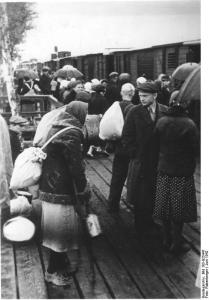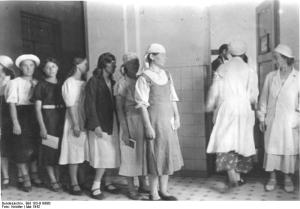It’s 1945 and soldiers in the US Army are about to shake hands with their Russian counterparts for the first time in Nazi Germany, the land they defeated together. The average GI didn’t know much about the Soviets except for the news/propaganda they’d consumed before and during the war. So how did the War Department deal with what was to be a meeting of WW2’s biggest allies?

Imagine all those GIs holding War Department Pamphlet No. 21-30 with its red cover and the hammer and sickle: our Red Army ally. It’s a 77-page illustrated booklet giving the GI the lowdown about Soviet army practices, uniforms and insignia, weaponry, language and other interesting tidbits. It’s not terribly easy to find information in English about regular Soviet soldiers and their everyday lives, so this booklet is a real find.
The Cold War was pretty much over when I was growing up in the United States, but I do remember the Soviet Union being accused of being a part of some vague axis of evil. That’s why I was so struck by how positive our Red Army ally was about the Soviets. I don’t think I’ve ever read or seen a US government source that attempted to be so fair and understanding about them.
On the first page under “Meet the Red Army Man,” it says:
He is your friend. He is your ally. He has fought hard in this war, just as you have. . . .
Elsewhere, the GI learns that Red Army discipline is strict, that soldiers make do with much less than what GIs have, and that off duty Soviets play dominoes and chess or read Pushkin. This lesson in humanizing the Soviets continues under the section “Why He Fights,” where the booklet argues Soviet soldiers are just the same as American ones. They want to live a peaceful life in their homelands, but in the Soviet case, they had to mobilize to defeat the brutal enemy that killed millions in the Soviet Union. The Red Army’s oath is even printed so the GI understands what ideal his counterpart aspires to.
My favorite section was on p. 6 when GIs are informed about Soviet women in combat. I was surprised women got a whole paragraph describing their work and the fact that some became commanders of combat formations.
Don’t be surprised if that tank commander turns out to be a personable young sergeant named ‘Masha’ (a popular nickname for girls).
Though apparently some of the language advice in the booklet is a bit shaky, the information as a whole is golden, especially the many color illustrations. I was also impressed at the little glimpses the booklet gave into everyday life of Soviet soldiers. But most impressive was seeing the massive attitude shift in the US government ahead of the monumental task of occupying the defeated Nazi Germany with its militarily strongest ally — and its biggest threat — the Soviet Union.




